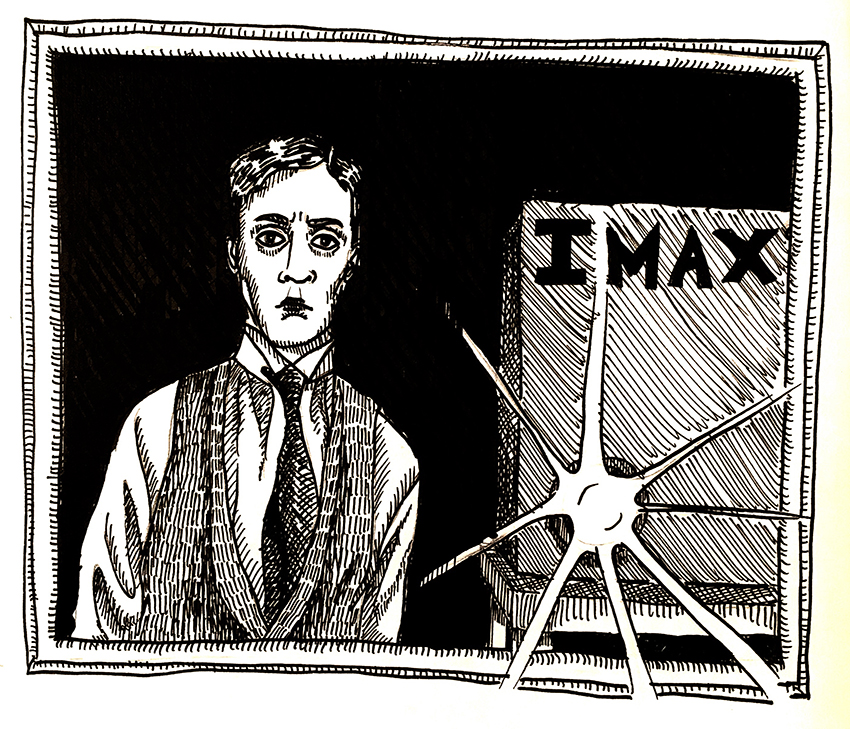Upon entering a theater, moviegoers are faced with an onslaught of decisions. Between Skittles or Starbursts, middle or back row, there are a lot of choices to be made. But one question you may not ask yourself — film or digital? — is perhaps more important to the movie-going experience than popcorn and Coke.
Since the late 1990s, theater owners have been steadily replacing standard 35mm projectors in favor of digital projectors for their ease of use and cheaper costs. Today, most multiplexes only operate in digital, and new generations are growing up without the presence of film.
“Digital exhibition was a huge benefit to the studios,” said assistant English professor Donna Kornhaber, a 2016 Academy Film Scholar. “There was definitely a year when you noticed the switch and (the theaters) were advertising and articulating that.”
In the past few years, filmmakers have been pushing for the revival of film, specifically 70mm, appealing to audiences that the format is the most optimal way to view their films. Among them include Paul Thomas Anderson’s “The Master” and “Inherent Vice,” Quentin Tarantino’s “The Hateful Eight” and Christopher Nolan’s “Interstellar.” Cinephiles have come out in hoards to see this rare format projected, proving it isn’t just a novelty but a large niche in the market. Fueling this debate between film and digital is Nolan’s latest film, the WWII epic “Dunkirk,” which recently exited theaters after a long run in both IMAX and 70mm.
“It’s unheard of,” said Jason Metcalfe, the technical presentation manager for Alamo Drafthouse Cinema. “This isn’t something that we’ve had at this volume for a long time.”
Alamo Drafthouse theaters have been riding this celluloid wave since 1999, when Tarantino hosted his own film festival at the Drafthouse’s original downtown location, where he showcased his personal collection of film prints until 2007. He reprised his role as host again in 2015, when he surprised audiences at a “Hateful Eight” roadshow screening at the Ritz. Moreover, Alamo is one of the only theaters in Texas with 70mm and 35mm capabilities.
“We’ve seen a lot of great digital stuff, but with film, there’s a rhythm to it, there’s a cadence that isn’t reproducible in digital at all,” Metcalfe said. “It’s this confluence of analog, exhibition and human interaction; it’s very much like a live event. The pattern of repetition in a film screening is sort of hypnotizing and natural.”
Alamo regularly screens old 35mm and 70mm prints of both cult classics and critical hits, and their patrons love it. But with an increasing number of visually stunning and elaborate spectacles, some viewers opt for a big-screen spectacle, like that available at the Bullock Museum IMAX Theater.
“It’s the experience you get in this theater,” said David Ripper, technical director for the Bullock Theater. “The quality of the image, the contrast — it looks pristine and crisp and clear, it’s uncanny.”
The Bullock Theater’s IMAX screen is an immense six stories tall, boasts a 12-channel sound system and is equipped with the most vivid optics in the digital realm, but what’s the real difference?
“All ages walk out with a smile on their face and say, ‘Oh my God, that was amazing!,’” Ripper said. “Being the only Laser IMAX theater in the state is really something to say.”
But all can agree that exhibition is crucial for the survival of filmmaking as a medium. With the rise of internet streaming and video-on-demand, many are choosing to stay in their homes rather than make the trip to the cinema.
“It’s really important to see it on a screen where you’re going to be able to not just understand, but experience the differences visually — on a screen much bigger than your hand,” Kornhaber said. “It’s the way that it was meant to be seen. Accessibility is important, but if you have the opportunity to see a film on the big screen, it’s the difference between seeing the Mona Lisa and seeing a reproduction of the Mona Lisa in a book.”
In the end, audiences have to decide how they want to participate in the moviegoing experience.
“People are looking for a specific experience when they go to the theater,” Metcalfe said. “One is not better (film or digital), just different.”















